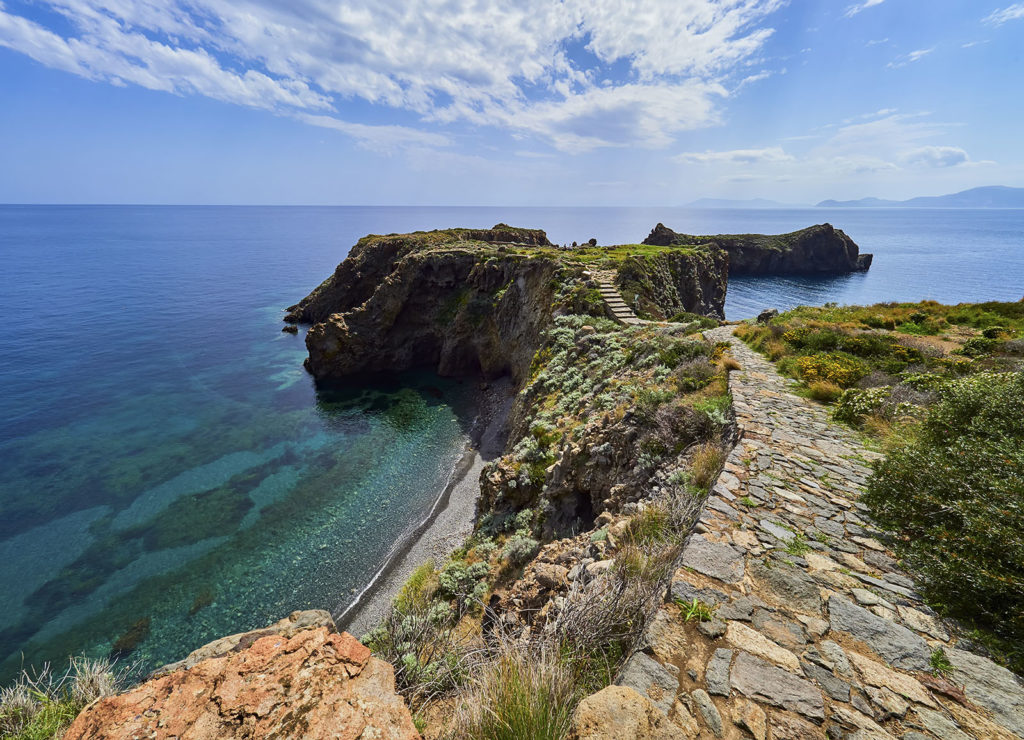Near the suggestive cove of Cala Junco in Panarea, there is a Prehistoric Village dating back to the Bronze Age (around 16,000 years ago) and discovered in 1948.

A visit to the prehistoric village, rather than an excursion, is a pleasant walk to discover the southern side of the island. The archaeological site can be reached by a small road that leads from the port to the village above then winds left towards Drautto and continues towards Cala Junco. The path that leads to the village offers beautiful views; in the first part you cross the village of Drautto, a hundred or so small white houses scattered along the coastline and surmounted by huge steps that were used for agricultural purposes. As the houses dwindle out, the Cala degli Zimmari begins, where you can dive into its beautiful waters and relax on the soft black sand. At this point only a short distance separates you from the prehistoric village and the magical Cala Junco.
The settlement is located on the promontory of Punta Milazzese and consists of 23 oval-shaped huts and one quadrangular one. In this archaeological site several finds have been found, from pottery and pots, to grindstones and utensils of the Mycenaean population.
Not by chance, the site is on a plateau that stretches towards the sea, protected by high faces that make it an ideal place for defence. This helps us to understand the concern about pirates and invaders. From here an ancient path leads to Cala Junco, probably used at the time of the prehistoric village as a dock. The bay that forms it is shaped like an amphitheatre, bordered on either side by extravagant rock formations that create a natural pool.
This cove is one of the most beautiful bays not only on the island but in the entire Aeolian archipelago. Its waters take on amazing colours ranging from emerald green and turquoise to deep blue. In the summer period, the cove is almost always very crowded, but this does not take away from the joy of diving into the refreshing waters and lying down and relaxing in a real corner of paradise.